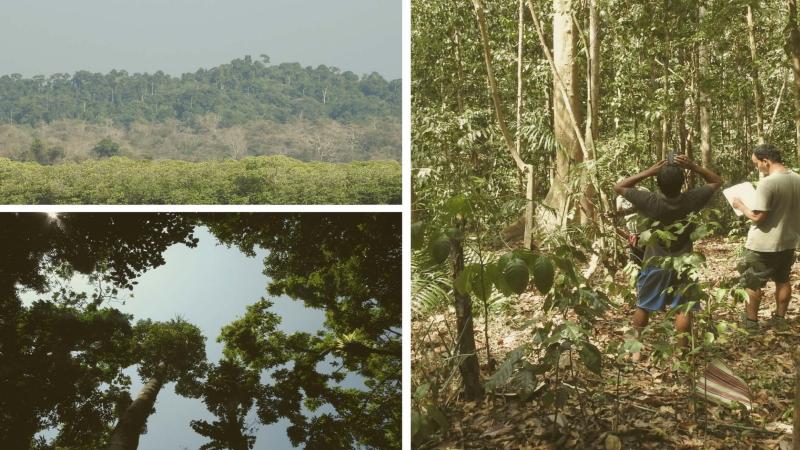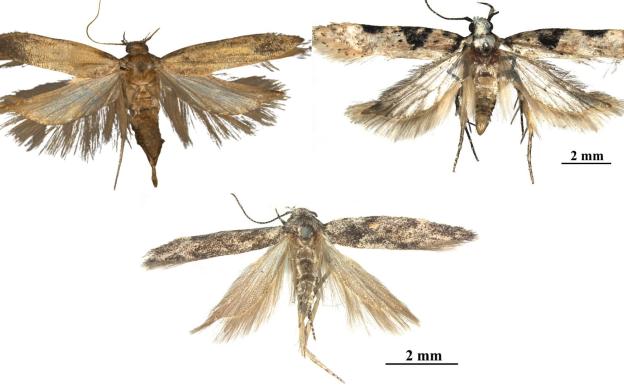
The Andaman forests. Credit: Akshay Surendra
Growing demand for timber, paper and agriculture since the 1990s has led to the loss of 1.3 million square kilometres of forests globally. The market needs are met by employing selective logging, which involves cutting down a few species of mature trees per hectare of forest, keeping the rest intact to provide space for the younger trees to grow. Although selective logging is considered sustainable, repeated logging alters carbon stored in the trees and soil, contributing to climate change. Logging also disrupts plant interactions with pollinators, leading to biodiversity loss and is a major issue threatening the world’s tropical forests. Besides, very little is known about the impact of tree logging on different forest types.
In a recent study, researchers from the National Centre for Biological Sciences, Bengaluru, and Nature Conservation Foundation, Mysuru, have shown how even a few times of selective tree-cutting impacts biodiversity and carbon storage of the Andaman forests. Their findings are crucial to understanding how different forest types are affected by selective forest logging, specifically in devising proper harvesting and forest regeneration policies. The study was published in the journal Forest Ecology and Management.
Forest logging has been rampant in the Andaman and Nicobar Islands since the British era, with selective logging having a history of 150 years. For a couple of decades post-independence, forests were freely accessible to all. However, since the late 60s, the State government has governed the southern Andaman forests, whereas the northern forests are leased to private timber logging companies.
Mr Akshay Surendra, currently a researcher at Yale University and an author of the paper, remarks, “Although the policy recommends a suite of sustainable logging measures, the biggest change was the drastic reduction in the volume of timber extraction.”
Currently, felling three trees per hectare is permitted. And every thirty years, one-third of them can be harvested.
In the 2000s, a Public Interest Litigation was filed against illegal logging in the Onge tribal reserve of Little Andaman, carried out by a public sector undertaking. Following this, the Supreme Court of India banned logging in all previously unlogged areas, permitting low-intensity logging in few previously logged areas. As a result, the State changed its working plan for timber extraction in 2005 under the new policy.
The researchers assessed the impact of logging in the Baratang and Middle Andaman forests for their study. First, they identified areas subjected to different logging patterns in these regions: a) forests with no tree felling since the 1990s; b) trees felled once (between 2007 and 2014); and c) trees felled twice (once in 1900s, and again between 2007 and 2014).
Second, they recorded tree height, diameter, and canopy cover of adult trees (diameter >30cm) and juvenile trees (diameter between 10-30cm). They studied the parameters in both deciduous and evergreen forest types. The team further examined the changes in stem density, canopy cover, carbon storage, and tree diversity to logging, impacting biodiversity and climate change. They also recorded the deciduous fraction (the number of trees that lose leaves in summer) among the patches. The authors report a claim in 1983 that logging increases the number of deciduous trees, which the team tested as a first in this research.
The researchers observed that there was a 23% reduction in juvenile tree density in deciduous patches. In contrast, juvenile tree density in twice-logged evergreen patches and unlogged patches was similar. Unlogged patches were those forests with no history of tree felling before the 1960s.
Selective logging also significantly impacted tree diversity in the patches. The team observed 118 tree species in deciduous patches and 151 tree species in evergreen patches, with 81 species found in both forest types. Juvenile tree diversity remained unchanged in logged forests. However, the juvenile trees in deciduous patches showed a 65% higher density in once-logged and a 35% higher density in twice-logged patches. Among juvenile trees, the fraction of deciduous tree stems in once, and twice logged patches were similar to unlogged forests.
Adult tree diversity was similar to unlogged patches, while their density was higher in once-logged deciduous patches than unlogged areas. The adult tree density of once-logged and unlogged patches was similar in evergreen patches, while the twice-logged showed a 22% reduced density. Adult tree density in evergreen patches declined by 25% in twice-logged forests. However, adult trees showed an 18% increase in the fraction of deciduous tree stems in once logged and 12% in twice-logged forests.
The canopy of trees and shrubs growing under the cover of the larger trees (called the understory) reduced by 18-22% in both once-logged and twice-logged patches in both forest types. The team did not find any reductions in forest tree canopy cover in once-logged forests. However, there was a 17% and 19% decline in twice-logged deciduous and evergreen patches, respectively.
Forest trees are the main reservoirs of carbon stock and help fight climate change. They capture carbon from the atmosphere and store it in the tree stems (called above-ground carbon stock) and soil (called below-ground carbon stock). However, logging disturbs and disrupts this cycle by initiating a release of carbon from trees and soil. The team observed a 50% reduction in above-ground carbon stock in the twice-logged deciduous patches. At the same time, there was no difference between logged and unlogged areas in the evergreen patches.
The authors say, “Maintaining unlogged forests are likely to gain importance for sustaining biodiversity and other ecosystem functions in tropical logging landscapes.”
With their observations, the authors say while the intensity (number of trees cut per logging event) of logging is acceptable, reducing the frequency (number of logging events) is essential to avoid the impacts of repeated selective logging on forests. They recommend that the gap between two logging events be more than 15-25 years and preserve unlogged forest patches in their current state. They also call for stringent limits on the extraction of timber from deciduous forests. To mitigate the negative impacts of logging on forests and soil, they also suggest Reduced Impact Logging (RIL), which involves the controlled and careful implementation of timber harvesting mechanisms.
This article has been run past the researchers, whose work is covered, to ensure accuracy.
Editor's Note: This article has been edited to correct the writer's name, which was incorrectly mentioned.






